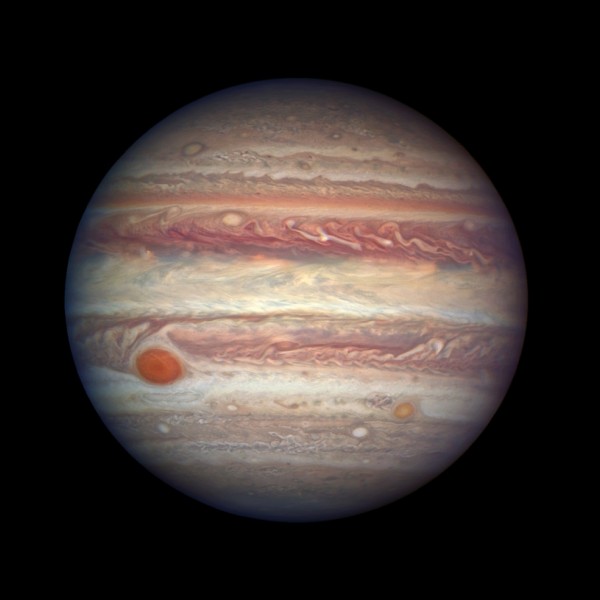By Ana Verayo, | April 10, 2017

This dazzling Hubble Space Telescope photo of Jupiter was taken when it was comparatively close to Earth, at a distance of 415 million miles. (NASA)
A stunning, new photograph of Jupiter has revealed the majestic gas giant's massive bands and violent storm systems courtesy of NASA's Hubble Space Telescope. Apart from these dynamic bands, the Great Red Spot is also highlighted in immense detail.
This new image was captured by NASA's Hubble Space Telescope on April 3, Monday when Jupiter arrived opposite the Earth. This means that Jupiter is directly aligned with the sun and Earth is in the middle, forming a straight line.
Like Us on Facebook
Jupiter's closest approach to Earth occurred a few days ago on April 7 where the biggest planet in the solar system was just 415 million kilometers away from Earth. Jupiter is at its farthest point from Earth at 968 million kilometers.
This new photo was captured by the Hubble Space Telescope's Wide Field Camera 3 instrument that can zoom in on details as far as 80 miles to capture a subject. This image also highlights Jupiter's colorful bands in unprecedented detail.
NASA mission scientists describe these bands as wind motions in alternating cycles that are caused by different layers of ammonia clouds. Due to their varying thickness and height, the lighter bands rise higher and are composed of thicker clouds as opposed to darker bands. Also, these bands appear distinctly due to high-speed winds that separate these layers, that can travel up to 644 kilometers per hour.
Of course, the iconic Great Red Spot can also be observed, which is a gigantic storm that is bigger than the entire planet Earth. However, it is still an enigma to astronomers why this storm has been slowly shrinking since the late 1800s.
Every 13 months, Jupiter arrives at this opposite the Earth, which means its next closest approach to our planet will be in May 2018.
The Hubble Space Telescope has been in orbit and observing our solar system and deep space for 27 years and counting. Hubble's successor, the new James Webb Space Telescope, will be launched in October 2018.
-
Use of Coronavirus Pandemic Drones Raises Privacy Concerns: Drones Spread Fear, Local Officials Say

-
Coronavirus Hampers The Delivery Of Lockheed Martin F-35 Stealth Fighters For 2020

-
Instagram Speeds Up Plans to Add Account Memorialization Feature Due to COVID-19 Deaths

-
NASA: Perseverance Plans to Bring 'Mars Rock' to Earth in 2031

-
600 Dead And 3,000 In The Hospital as Iranians Believed Drinking High-Concentrations of Alcohol Can Cure The Coronavirus

-
600 Dead And 3,000 In The Hospital as Iranians Believed Drinking High-Concentrations of Alcohol Can Cure The Coronavirus

-
COVID-19: Doctors, Nurses Use Virtual Reality to Learn New Skills in Treating Coronavirus Patients







